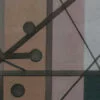Gerald Balfour is remembered today mostly for being the brother and political confidant of Arthur Balfour, the Conservative Prime Minister and statesman who later issued the famous declaration that the British government would ‘view with favour’ the establishment of a national home for the Jewish people in Palestine. Gerald had spent a few years in the 1870s teaching classics at Trinity College, Cambridge, and a few more trying to write philosophy in Florence, but in 1885 he joined the family business and entered Parliament for the Conservatives. He made little mark there until a decade later, when Lord Salisbury appointed him, in what the papers called a ‘family arrangement’, to the same post his brother had held in the late 1880s, Chief Secretary for Ireland. Administratively talented but never politically adept, Gerald ended his time in Ireland resented by nationalists for his superior manner and loathed by landlords for his surprisingly progressive land and local government reforms. Alongside his brother and another 200 Conservative MPs, Gerald lost his seat in the 1906 Liberal landslide.
Gerald Balfour left politics without regret. He did some of the things well-connected outgoing politicians do, joining company boards and serving on Royal Commissions, but he spent much of his time until his death almost forty years later in his study, sometimes with collaborators but often alone, trying to discern patterns and meanings in a great heap of automatic writings – or ‘scripts’ – produced by a psychically attuned woman who walked into his life in 1911 and knocked him sideways.
For in 1906, at a loose end and at the urging of his sister (and Principal of Newnham College, Cambridge), Eleanor (Nora) Sidgwick, Gerald Balfour accepted the presidency of the Society for Psychical Research (SPR). Founded in 1882 by a tight-knit group of friends mostly associated with Trinity College, Cambridge (including Gerald and Arthur, who served in 1893 as its president), the Society spoke to a wide late-Victorian interest in spiritualism and the paranormal. Its most active members – especially Nora’s husband Henry Sidgwick, Professor of Moral Philosophy – insisted spiritualist claims must be investigated ‘scientifically’. For two decades, the Society researched mediumship and telepathy, debunked claims and exposed frauds, but in the early twentieth century it moved in a new direction.1 Gerald, in a public lecture in 1909, encouraged the Society to devise a means to assess evidence for ‘spirit-return’ after death.2 The prominent physicist Oliver Lodge and a Cambridge coterie were already working along these lines, collecting scripts – automatic writings produced by mediums in a trance state and ostensibly working in isolation from one another – and searching them for common phrases or motifs that might indicate telepathy or the presence of intelligences seeking to communicate from beyond the grave.
One of those recruited ‘automatists’ proved particularly prolific and talented, transmitting messages purportedly from the SPR’s most prominent dead founder-members (and the current leadership’s closest friends) themselves: Henry Sidgwick (who died in 1900), the poet Frederic W.H. Myers (who died in 1901), and especially the experimental psychologist Edmund Gurney (who died, possibly by his own hand, in 1888). This was one ‘Mrs Willett’, the nom-de-medium of a wealthy Welsh matron named Winifred Coombe Tennant, whose psychic activities would remain, through her life, a closely-guarded secret. ‘Mrs Willett’s’ scripts urged the production of children, exceptional children, and especially of one child – ‘a genius . . . of a high order’, a world-leader to be conceived by the automatist herself. 3 In her not-strictly-private diary and in conversations with Lodge, Winifred expressed her amazement about that otherworldly request: she was not having sex with her husband anymore, and they had no plans for further children. ‘If I do bear yet another,’ she wrote, ‘it will only be as a direct result of Edmund Gurney’s repeated requests and my love for him.’4 She did bear another child. Augustus Henry Coombe Tennant, named to inaugurate a new Augustan age, was born on 9 April 1913.
What was known to only a few at the time, and was kept secret from the child Henry (as he was known) until his mid-forties, was that he was Gerald Balfour’s son, conceived in a hotel on Langland Bay on the Welsh coast in early July 1912. Born to fulfill a prophecy, he was scrutinized through the first half of his life by Balfour, his mother, and a few in-the-know members of the Society for Psychical Research for signs of that world-transforming genius they confidently awaited. Through those decades, the automatists (all women) kept the scripts coming, and the interpreters – especially Gerald and his close friend and research partner J.G. Piddington – kept hard at work too, documenting those common motifs and patterns that, they thought, could not be explained by chance alone. This was the project of the ‘cross-correspondences’, the Society’s protracted effort to ‘prove’ the survival of human consciousness.5 It was also, surely, one of the most elaborate justifications for an extramarital liaison ever devised.
Not that Winifred and Gerald’s script practice was just a hoax. Winifred Coombe Tennant didn’t fabricate psychic communications simply to draw this attractive older man into her bed (though she clearly wanted him there); Gerald didn’t cast himself as the servant of higher powers to excuse a folie à deux that would give his wife much pain. All parties in this story – Winifred and Gerald, automatists and script interpreters – genuinely believed themselves to be receiving messages from the other side. They were world-making as well as lovemaking, and if the rules of their practice seem only too familiar, urging a union of spiritual women and rational men, they acted in a period of such gender codes under pressure – pressure that turned our medium unreliable and changed the plot. ‘Mrs Willett’ would foretell, and then produce, a messianic child – a child, so the psychical researchers thought, who would be someone just like them: a man, educated at Eton and Trinity, launched into public life. So, Gerald Balfour shut himself up in a Surrey country house for three decades, poring over scripts, as the woman who produced those scripts became a suffragist and internationalist, a Liberal candidate for parliament and a delegate to the League of Nations.


Sign in to Granta.com.







